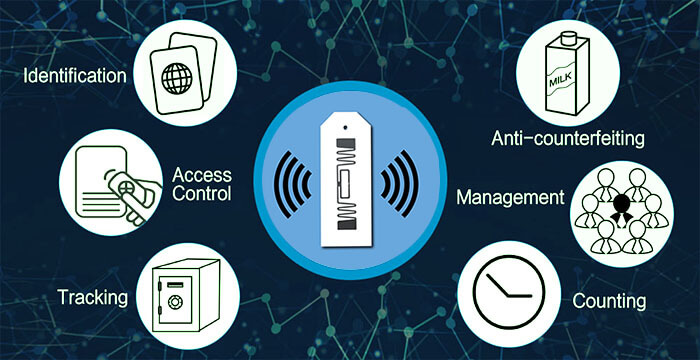RFID (Radio Frequency Identification) technology has evolved significantly over the years, and RFID tags have played a critical role in driving these advancements. In this article, we will explore the latest advancements and future trends in RFID tags, providing insights into the exciting possibilities and potential applications.
1. Miniaturization and Integration
One of the notable advancements in RFID tags is the miniaturization of components and integration of functionalities. RFID tags have become smaller and more compact, allowing them to be easily embedded or integrated into various objects, products, or materials. This miniaturization opens up new possibilities for applications in areas such as healthcare, logistics, and retail, where seamless integration and inconspicuous tagging are crucial.
2. Enhanced Read Range and Sensing Capabilities
Advancements in antenna design and tag technology have led to improved read ranges and sensing capabilities. RFID tags can now be read from longer distances, enabling faster and more efficient data capture. Additionally, specialized RFID tags with sensing capabilities, such as temperature, humidity, or motion sensing, are being developed. These advancements expand the potential applications of RFID technology in areas such as cold chain management, asset monitoring, and quality control.
3. Hybrid and Flexible RFID Tags
Hybrid RFID tags that combine multiple technologies, such as RFID and sensors, are gaining traction. These tags can provide additional functionalities beyond traditional identification and tracking. For example, hybrid RFID tags with integrated sensors can monitor environmental conditions, detect tampering, or provide real-time data on product quality. Flexible RFID tags using printed electronics and flexible substrates are also being explored, enabling tagging on curved or irregular surfaces.
4. Internet of Things (IoT) Integration
The integration of RFID technology with the Internet of Things (IoT) is a significant trend in the RFID tag industry. By connecting RFID tags to an IoT platform, the collected data can be analyzed, shared, and utilized in real-time. This integration enables advanced analytics, predictive maintenance, and improved decision-making. RFID tags are becoming essential components in building smart and connected systems across industries.
5. Sustainability and Eco-Friendly Tags
As environmental concerns continue to grow, the development of sustainable and eco-friendly RFID tags is gaining attention. Efforts are being made to reduce the environmental impact of RFID tags by using recyclable materials, optimizing manufacturing processes, and exploring alternative power sources. These eco-friendly tags contribute to sustainable practices and align with the increasing focus on environmental responsibility.
Conclusion
RFID tags are undergoing continuous advancements, driving innovation and expanding their applications in various industries. The miniaturization of components, enhanced read ranges, sensing capabilities, hybrid and flexible tags, IoT integration, and sustainability efforts are shaping the future of RFID tags. As these trends continue to evolve, we can expect even more exciting possibilities and widespread adoption of RFID technology in the years to come.


